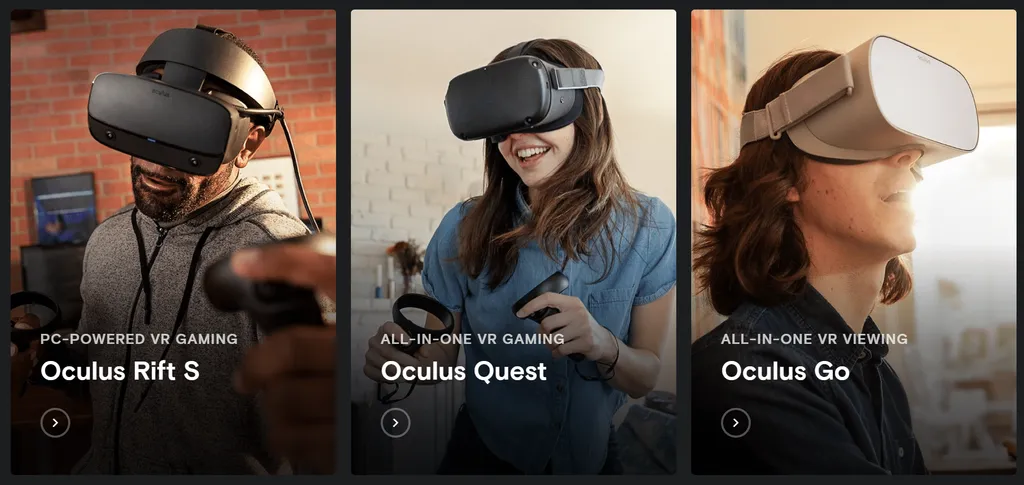Every day people all over the world consider purchasing their first virtual reality headset- more now than ever before.
If you’ve got a PlayStation 4 sitting in front of an open living room and want to play VR games like No Man’s Sky, Skyrim VR, and Blood & Truth, what choice to make is fairly obvious. For those with a gaming PC and a $1000 budget, few will pick anything but Valve’s Index.
For most others, there’s Oculus. Facebook pitches Oculus to the world as the VR brand, with a lofty eventual goal of 1 billion users. But despite how new VR is, the company’s product lineup is both fragmented and confusing. Imagine being a new VR buyer looking at a shelf and wondering what to get: “Why is Rift S the same price as Oculus Quest? What do I lose exactly by going for the $200 Oculus instead of the $400 Oculus?” The negative impacts of this confusion affect both VR developers and any buyers who choose the “wrong” headset.
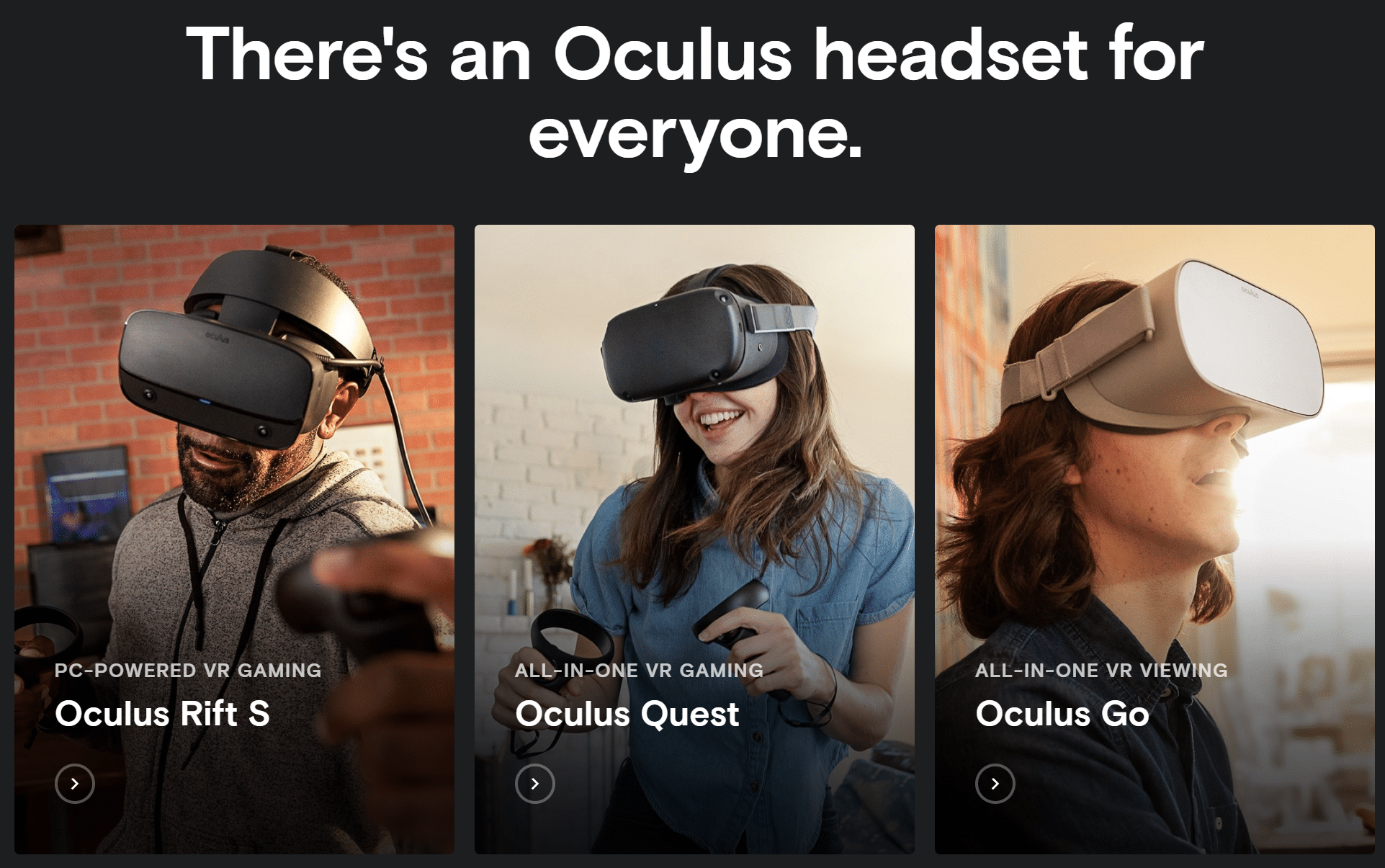
Sony & Valve focus on one headset each- Facebook has three.
Oculus Go is an essentially deprecated, heavily limited dead end. Rift S lacks IPD fitting, which limits the number of people who feel totally comfortable wearing it. Oculus Quest is looking to be Facebook’s first major success in VR. Both Rift S and Quest can be powered by a gaming PC, but each have ugly trade-offs making them less than ideal.
In March, the Oculus website leaked the existence of a ‘Del Mar’ headset with ‘Jedi’ controllers and a ‘First Access’ developer program. Last week, Bloomberg reported this headset could be an improved 20% lighter Quest with a 90 Hz refresh rate.
To avoid being thrust back into the same kind of confusing lineup, fragmentation, and dead-end entry points, Facebook needs to converge on one kind of headset – not three.
Go Needs To Be Replaced… Eventually
Go launched in mid-2018 as a product defined by and designed toward a price: $200. At the time, VR had been limited to gaming PCs, PlayStation VRs, and cellphone holders. Go forged a new path, standalone, which has now been more successfully realized in the $400 Quest.
Facebook still sells Go (when it is in stock) cut down to $150. The headset accesses an essentially separate version of the Oculus Store without Quest’s hits like Beat Saber, Superhot, Vader Immortal, Rec Room, VRChat, Pistol Whip. Based on what we know so far, we don’t expect Go to support Facebook’s Horizon metaverse either.
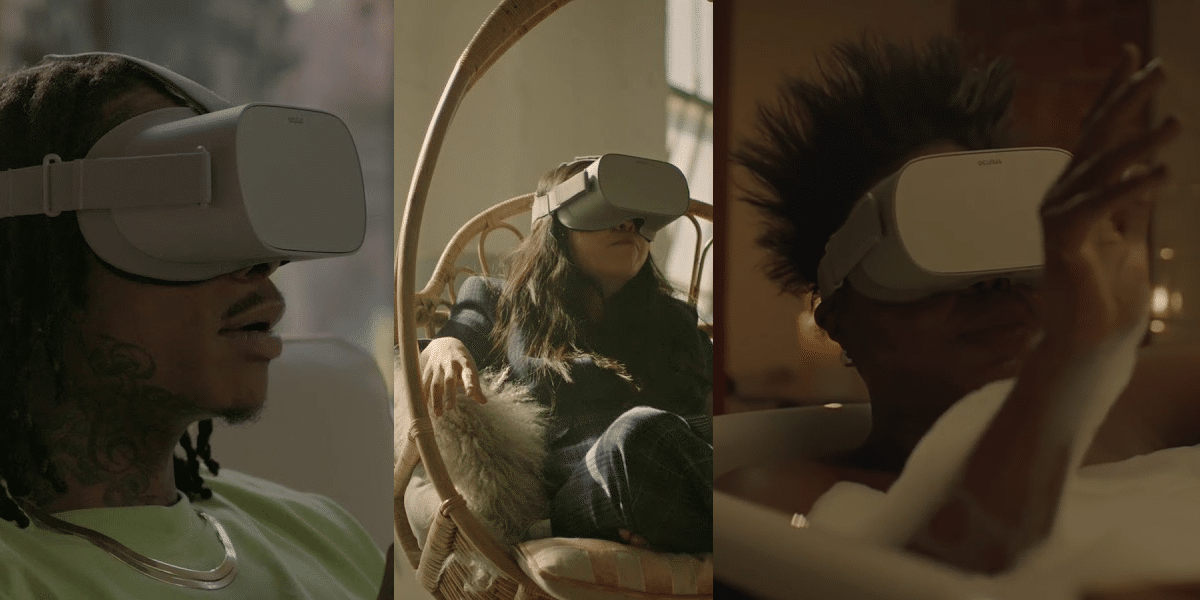
But over time, the true value of a headset like Go was found- passive experiences and basic social. Heavier more complex headsets are much more capable, but Go offers a low cost easy to use path for those who are interested in VR’s non-gaming use cases.
Unfortunately, purchasing Oculus Go is a dead end. There is no upgrade path. Getting into VR gaming would require buying an entire Quest. Go doesn’t have even a rudimentary form of Oculus Insight tracking.
Ditching Go without a plan to replace it would be a loss to the industry, making VR more expensive. In September 2019, Facebook’s Director of Oculus Product Management suggested that controller-free hand tracking could one day be used in a future media-focused headset. While this could be a sign to expect a Go 2 someday, this would ultimately face the same “dead end” issue as today’s Go.
Recently, some in the industry speculated that Quest sold without controllers might take this role, replacing Go. Quest has an experimental hand-tracking mode that lets you use the headset without its controllers already, and recent hints from developers suggest this support could be integrated into official apps in the near future.
At $300 or so, such an offering would keep a relatively accessible entry point. Go’s $250 64GB model often sold higher than its $200 model. The ability to upgrade to the full Quest experience at any time (by buying controllers) would be of significant value in itself. Facebook’s entry point could one day become a start for buyers, not requiring them to start over with a new headset to upgrade.
Quest Is Just A Start
But today’s Oculus Quest is simply too uncomfortable to replace Go – it’s a noticeably heavier headset.
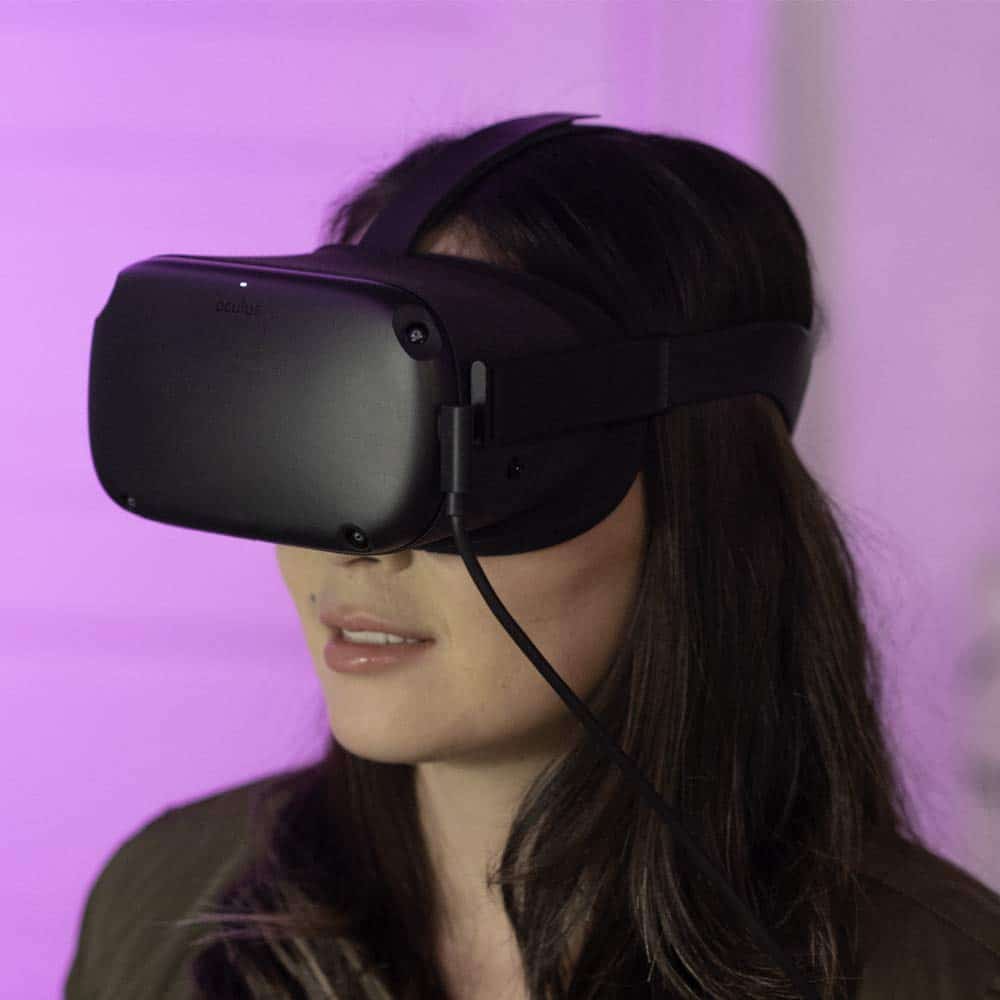
Quest’s controller-free hand tracking, currently, is also not quite good enough to be the only input method. The latency is too high, the tracking area is too small, and it only properly works in a bright environment.
When analyzing the driver file for what is believed to be the next Touch controller, we found evidence that Del Mar’s cameras will run at twice the rate of Quest’s. This would allow for a noticeable decrease in the latency of hand tracking.
To process the image data, Quest uses Qualcomm’s flagship chip from 2017. A more recent chip would be able to run more advanced machine learning models that can better handle occlusion and/or have a wider functional field of view.
By adding even a simple infrared emitter to the front of the headset, hand tracking could even work in the dark. A more costly pattern emitter could significantly increase fidelity, but this seems unlikely in the near term.
If this next headset is 20% lighter as reported, it would be roughly the same weight as Go. If it makes these improvements to hand tracking, that would become a viable input method. Del Mar could be sold without controllers as a valid de facto replacement for Go.
Unlike Go, this headset would access the real Oculus store. It would only run apps which support hand tracking, but the owner could buy controllers and get into VR gaming at any time.
Rift S Isn’t Obsolete Yet- But It Will Be
Some in the industry argue Rift S is already obsolete. Quest can now act as a Rift with an Oculus Link cable, and it has a more premium design, OLED panels, and lens separation adjustment.
But just like with Go, the Quest’s limitations leave it just short of being a true replacement. Rift S is a more comfortable headset with a higher refresh rate and side cameras to track a wider range of movements.
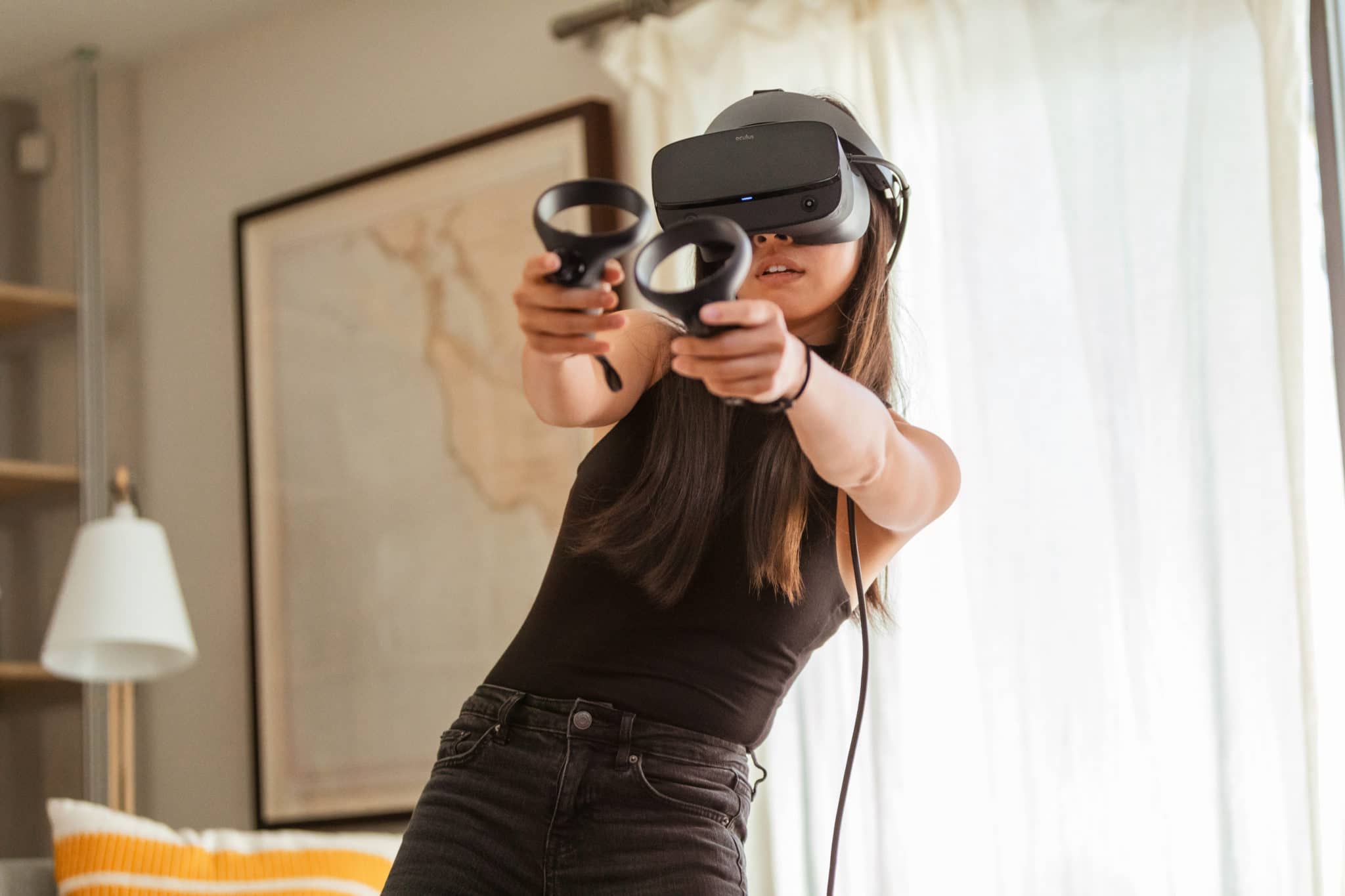
The headset reported by Bloomberg, 20% lighter with a refresh rate of 90Hz, could potentially eliminate two of these three hurdles.
Many argue for the value of headsets designed specifically for PC VR. Not needing a built-in system on a chip (SoC) and battery allows for lower cost and investments in other specifications.
But these PC-only headsets are tethered to a computer with a heavy cable – a flaw that VR is overdue to evolve past. HTC used 60 GHz wireless tech to deliver Vive wireless, but this resulted in a $300 adapter that works best with wall mounting.
With Oculus Link, Facebook proved out what some had argued for years; a much lower bandwidth pipeline could deliver a somewhat acceptable VR experience, albeit with some image compression artifacts. The latency is also beyond what some find comfortable. Switching between a Quest and Rift S on SteamVR, this is instantly noticeable. At 90Hz, however, this latency difference would all but disappear. In fact, if Facebook sticks with OLED it would be lower than Rift S, according to John Carmack.
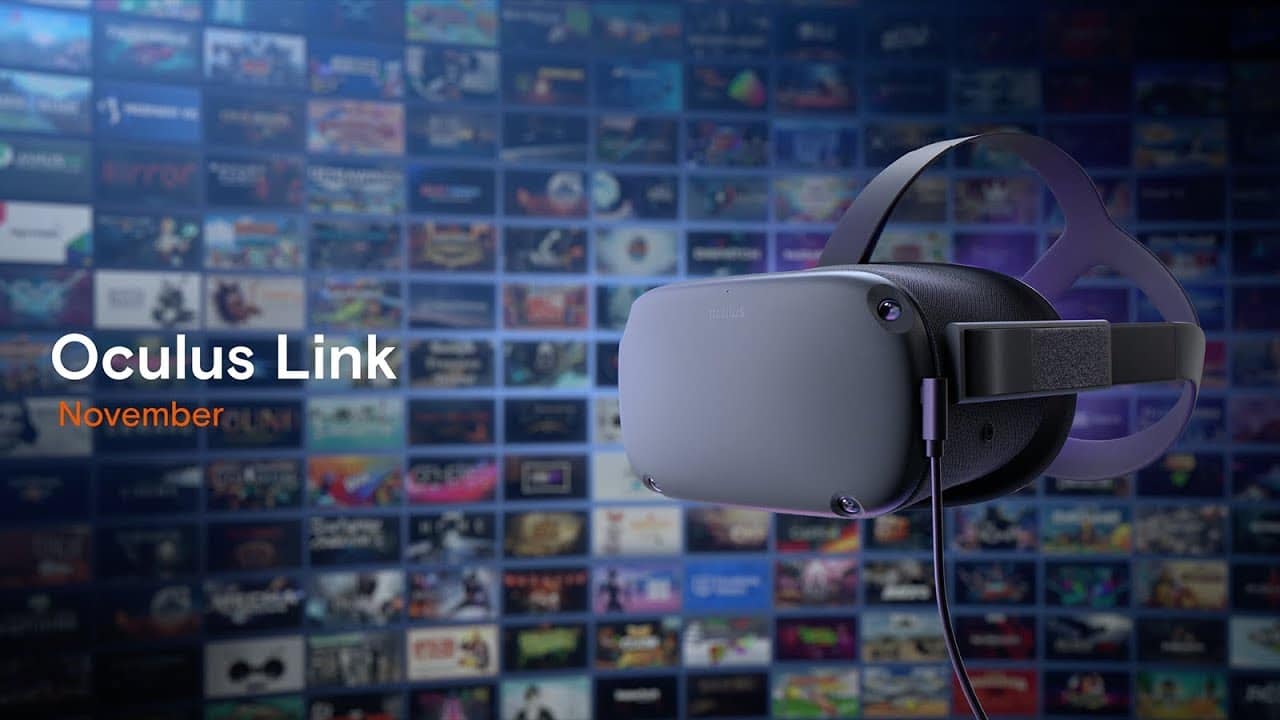
Oculus Link operates over USB with around 150 Mbps of bandwidth. While 3rd party apps like Virtual Desktop do this over the local WiFi network, this isn’t practical for most homes. Not only does the headset need to be close to the router, but other network traffic can cause judder and dropouts.
At Oculus Connect 6, Carmack floated the idea of a USB WiFi dongle running custom firmware. The VR headset would directly connect to it instead of the router, offering a dedicated 5 GHz (perhaps even 6 GHz) connection. Even 5 years ago, WiFi dongles were capable of the needed speeds.
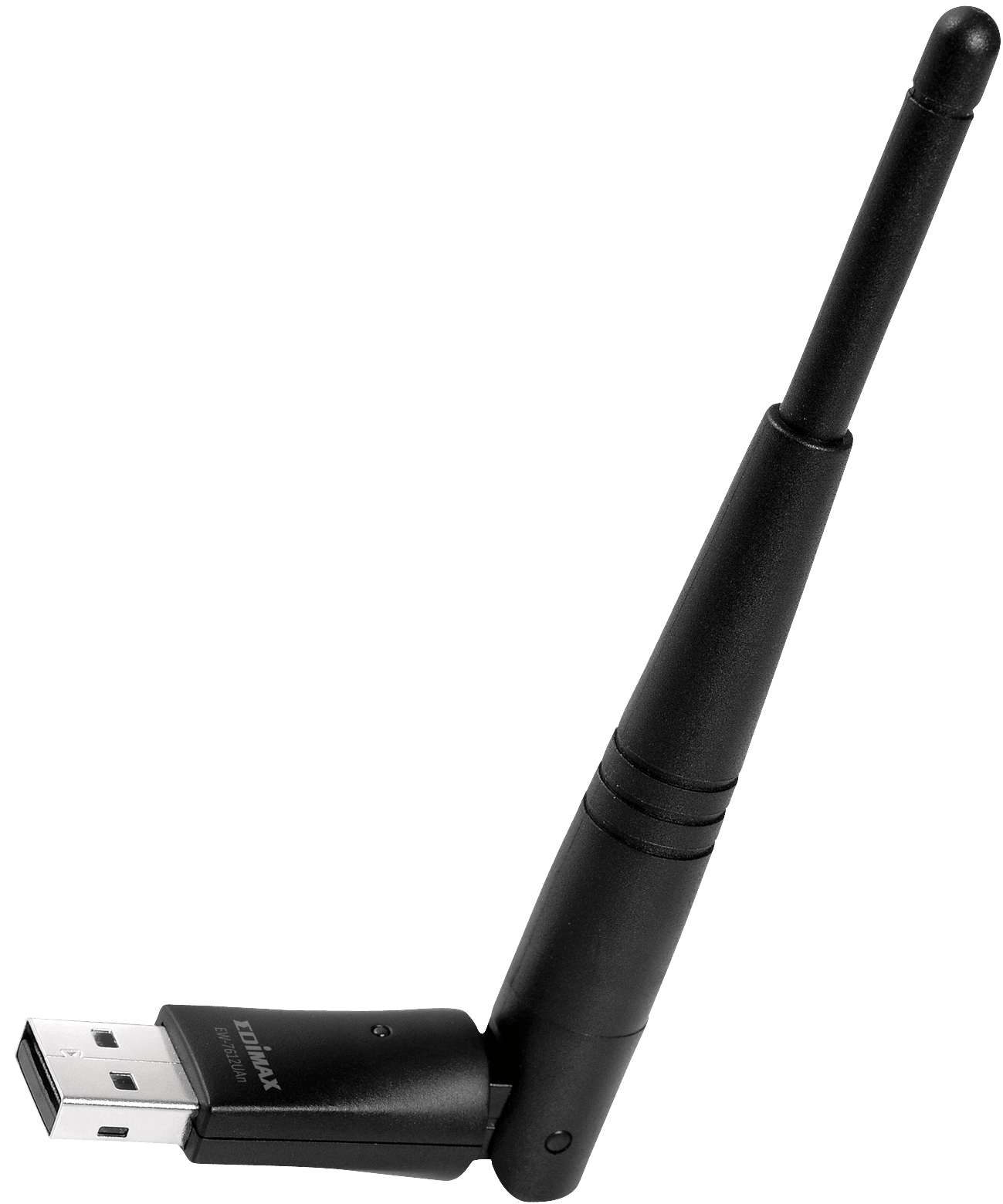
Today suitable dongles are a commodity, selling for $20 on Amazon. Even with a healthy margin, this could end up cheaper or at a similar price to the Link Cable. The experiential benefits of wireless are significant, and starts the path to a future time when VR developers can design assuming wireless.
So an affordable wireless PC headset would need to have a battery and SoC already. A truly safe headset would need to run Guardian, and thus include tracking, onboard the system. With no real design difference, why have a PC-only headset at all? For Facebook, PC VR could become just a “mode”.
But what would happen to Rift? Rift would become a platform – in fact, Facebook’s marketing often already refers to it as such.
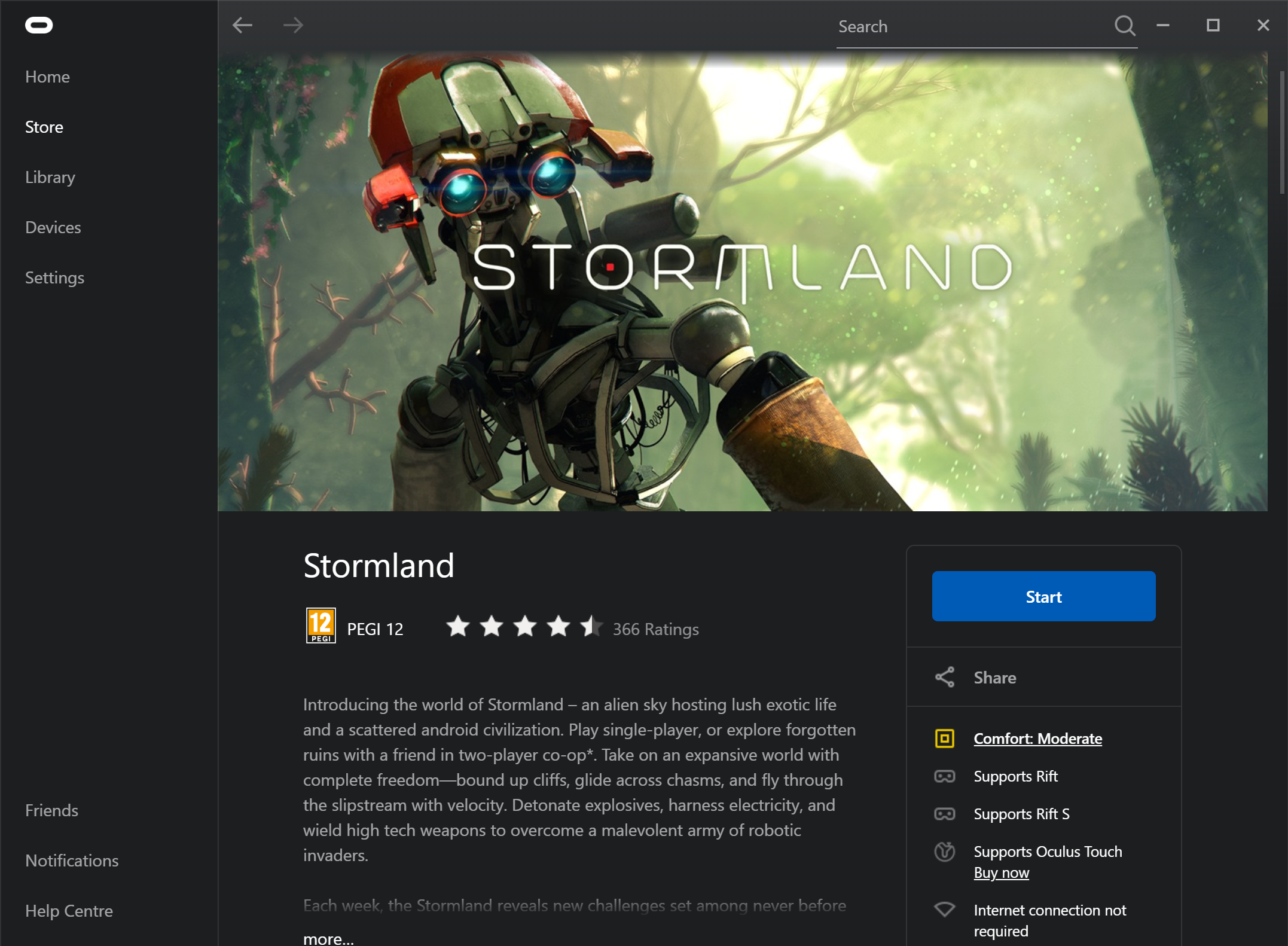
This would also be a great time for Facebook to finally open this “Rift platform” to other PC VR headsets. Converging on standalone means Facebook can probably never offer the cheapest PC headset — a game it lost to Microsoft years ago. If Rift becomes just a platform, hardware agnosticism would be the obvious next step.
Pro Model?
To be clear, offering different types of VR via SKUs (Stock Keeping Units) rather than widely divergent headset designs and brands doesn’t mean there can’t be different tiers.
During E3 2019, we interviewed Facebook’s Jason Rubin about its strategy in VR. We got a distinct sense the company isn’t interested in higher end headsets, wanting to keep prices as low as possible to grow an early market.
But as long as it supports the same controllers and the same wireless dongle, a Pro headset doesn’t introduce fragmentation. Even mainstream games consoles now adopt this approach.
3 Offerings, 1 Headset
Facebook has an evolving vision that seems to have resulted in a fragmented product lineup. With Quest, it found the path consumers want. If the next Quest makes improvements to weight, refresh rate and hand tracking, it can replace Rift S and Go too.
How would this look in market? One SKU would be a fairly neutral box without controllers. On the outside of the box, and in the Amazon listing, would be a list of social VR apps alongside Netflix, Oculus Venues, multi-window Browser, and casual games with support for hand tracking.
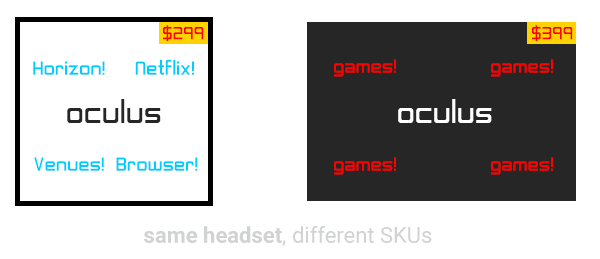
Another SKU would be gaming-focused with controllers, highlighting the most popular VR games of the time. The Link Wireless Dongle, priced somewhere between $50 and $100, could enable access to Rift and SteamVR with a PC.
With all Facebook’s resources focused on one headset, the confusion to consumers and fragmentation to developers can finally start to be be eased- a necessary step for VR to grow.

